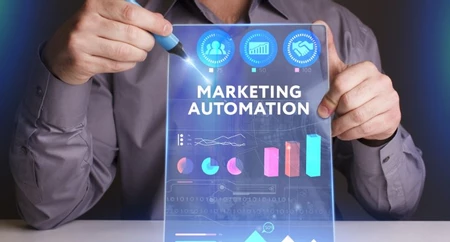
Marketing Automation Best Practices – Do it Right!

The idea of marketing automation may be familiar to you, especially if you own a business, are a marketing expert in an organization, are in B2B or B2C business, or are simply a consumer who experiences the effects of marketing daily.
The goal of ‘marketing activities’ is simple: Get as many potential customers as possible to the business so the salesperson can finalize a deal and increase the business’s income. Marketing automation best practices can make this process easier.
What are the most important Marketing Automation best practices?
The first step is to get ‘Leads’
In the marketing world, the term ‘Lead’ means an identified person; an identified person is someone who has shown interest in your business and has given you details about themselves (most often name and email address).
There are many ways to get your potential client’s details. One of them is frontal tradeshows, another is a web advertisement, which directs clients to landing pages with forms. Other possible methods are using websites that lead to a “contact us” form or phone calls to the business, and so on.
The second step is a database management
With time, the number of leads grows. Some of the leads will be automatically entered to the marketing automation system (by filling the form), while others will be manually uploaded to the system (like leads that you collect from trade shows and phone calls). It is important to keep the leads database clean (no duplicates) and relevant.
The next step is to create your own “Marketing Funnel”
At the top of the marketing funnel, you will find all of the leads, and at the bottom, you will find only the leads that are ready to close a deal. These leads will be directed to the sales department (those are MQL – Marketing Qualified Leads). There are other steps in between, but we will discuss them in another article.
The fourth step is Engagement
This goal at this step is to increase the interest in your product or service.
One of many ways to do this is to send emails with content that describes your product, or content with an added value to the potential customer. The content should be sent once in a certain period of time, a process called nurturing. Another option is to send text messages (SMS) with special offers or to create a webinar with added value.
So, why automate?
When your database is small, you can manage it manually. However, when it grows to more than a few dozen entries, you will have to start using applications to help you automate, or you may lose potential sales opportunities. Marketing automation applications offer the option to schedule sending times for emails and text messages (SMS), to create invitations for webinars, and above all, they can manage lead movement through the marketing funnel, and pass the leads to the sales department when it is the right time to make a “sales call.”
The most efficient way to identify the MQL is by the marketing automation scoring system. Through this method, every lead gets a score for each action, and the number of points for each action is set by the marketing and sales departments. When leads reach the right score, the marketing automation platform (which is synced to the sales system) sends an alert to a specific salesperson and notifies them that now is the right time to contact this lead and close the deal.
A small comment about marketing
The world of marketing is vast, and the people who work in the marketing automation industry sometimes forget this. This article is not about marketing activities themselves, and it is important to say that the content, the advertising messages, and timing – all have a crucial impact on the number of leads you obtain and their quality. Always remember: Marketing automation does not replace marketing itself; it only makes life easier and assists with pushing more leads towards sales.
